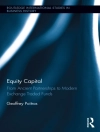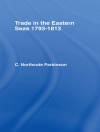Tanzania’s annual real economic growth rate has in recent years been between 6 and 7 percent with Gross National Income equivalent to about US$340 per person. A "hidden" economy could potentially have contributed an additional US$100 per person. Forestry, fisheries, mining, and wildlife made traditional contributions to the economy. Hidden values and untapped potential remain uncounted. Some 582, 000 tourists visited Tanzania in 2004, contribution US$750 million to export earnings. A recent single shipment of illegal ivory left Tanga, valued at US$200 million. Commercial fishing fleets operating offshore contribute in excess of US$300 million to foreign coffers; less than 2 percent finds it sway back to Tanzania. Most of the production from half a million artisanal miners leave the country unnoticed and untaxed. This book is about this hidden part of the economy-the uncounted, the illegal, the unnoticed, or the squandered. This paper advocates a three-pillared approach to improve capture of this hidden value. The first pillar of good governance eliminates corruption, improves transparency, controls illegal activities, and improves accountability, monitoring, and compliance. The second pillar of good management eliminates price distortions, improves capture of resource rents, and reduces waste. A third pillar of safety nets reduces conflict and social vulnerability.
World Bank
Putting Tanzania’s Hidden Economy to Work [PDF ebook]
Reform, Management, and Protection of its Natural Resource Sector
Putting Tanzania’s Hidden Economy to Work [PDF ebook]
Reform, Management, and Protection of its Natural Resource Sector
购买此电子书可免费获赠一本!
语言 英语 ● 格式 PDF ● ISBN 9780821374634 ● 出版者 The World Bank ● 发布时间 2008 ● 下载 3 时 ● 货币 EUR ● ID 10009387 ● 复制保护 Adobe DRM
需要具备DRM功能的电子书阅读器












